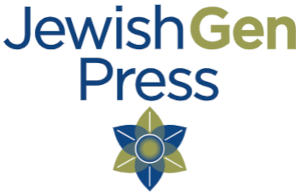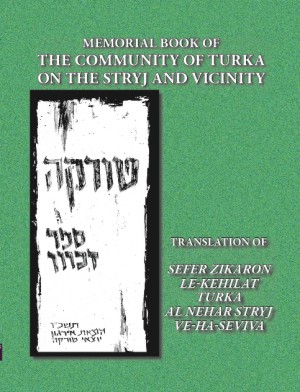

Published by the JewishGen Press
Translation Project Coordinator: Mary Violette Seeman
Original Yizkor Book:
Available from
for $41.00
Click here to see the index containing the family names in this book. If you already have purchased the book, please print out and insert into the back of the book.
Translator: Jerrold Landau
Edited by: Yitzhak Siegelman and Association of Former Residents of Turka (Stryj) in Israel
Published in Israel, 1966, (Hebrew and Yiddish)
 |
Details:
Memorial Book of the Community of Turka on the Stryj and Vicinity (Turka, Ukraine)
Translation of Sefer Sikaron le-Kehilat Turka al Nehar Stryj ve-ha-Seviva
Turka is a Ukrainian town situated on the left bank of the river Stryi. Jews first came to Turka in the 1800s. The first synagogue, Jewish cemetery and the Jewish old age home were built in 1730.
In 1903, Turka began to flourish when a railway line connected the city with Lwow and with Budapest, and the Austrian government authorized the founding of an official Jewish community. Business expanded, especially the lumber business. Jews owned the sawmills, had licenses to sell liquor. Others worked at various trades - tailoring, shoemaking, barbering, clock making, and lock smithing. Many of the physicians and lawyers in Turka were Jews. Yiddish theatre came to Turka and interest was sparked in cultural events, sports events, and political events. Some Jews were Zionists, some were Hassids, some were socialists, and some were assimilationists. After the Great War, Galicia reverted to Poland, the city had been plundered by the Russian army; many Jews had left, and all Jewish property had been destroyed. There were Ukrainian revolts and Jewish pogroms. Nevertheless, after the War, there were approximately 6,000 inhabitants in Turka, 41% of whom were Jewish. Another 7,000 Jews lived in the surrounding villages. The Jewish population managed to rebuild. Just prior to World War II, 10,000 people lived in Turka; half were Jewish. The catastrophe began when the Germans turned against the Soviet Union in June 1941 and Turka was captured by the Wehrmacht. The Jews of Turka were massacred, or starved to death, or sent to the Sambir ghetto and, hence, to the crematoria. There are no Jews left in Turka today.
This book serves as a memorial to the Jewish community of Turka.
Turka, Ukraine is located at: 49°09' North Latitude and 23°02' East Longitude
Alternate names for the town are: Turka [Polish, Ukrainian], Turka al nehar Stry [Hebrew], Turka nad Stryjem
Nearby Jewish Communities:
|
 JewishGen Press
JewishGen Press
 JewishGen Home Page
JewishGen Home Page
Copyright © 1999-2025 by JewishGen, Inc.
Updated 17 Oct 2022 by LA